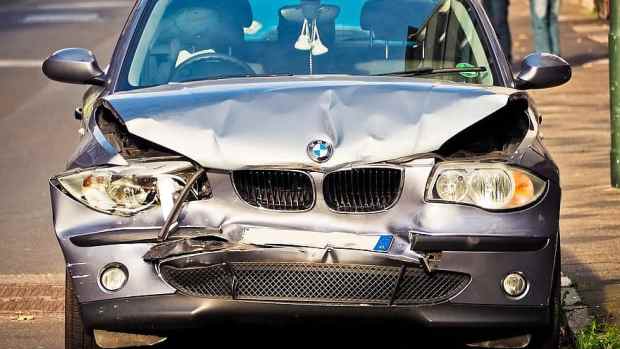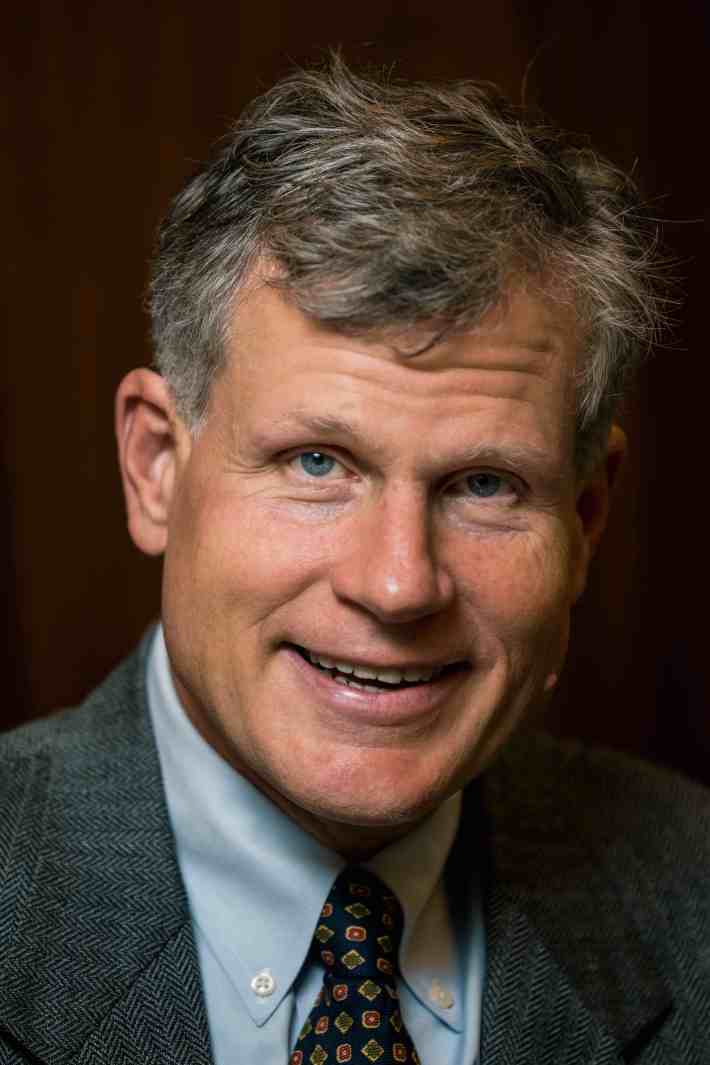OPINION: A Livable Streets Agenda for the 2021 Mayor’s Race … And Beyond
10:00 AM EST on January 21, 2021

We wonder what happened to the driver of this car. But state DMV doesn’t seem to care.

City elections are around the corner, and due to term limits, will result in a new mayor, comptroller, and a new majority in the City Council. What legislative and other action does the livable streets community want and expect from the freshly minted city government that will take office on Jan. 1, 2022? There are so many things! But here’s the top-10 list. (Caveat: Our state legislature has exclusive control of some aspects of our streets and traffic, so some critical issues don’t appear on this list of asks from our city electeds — making the top-10 list into a top-seven list, but you get the idea).
Remove the NYPD from traffic law enforcement
Since at least 2012, I and much of our community has urged that crash investigations and traffic law enforcement be transferred from the NYPD to a civilian agency with the expertise to discharge these functions neutrally, without “car blindness,” and in a manner that promotes the city’s ostensible policy of promoting walking, cycling, and other alternatives to private motor vehicle transport.
The Defund the Police movement in the wake of the George Floyd killing makes this particular transition of responsibilities the perfect low-hanging fruit for livable streets and police accountability activists to pluck as partners. We have already automated the issuance of roughly 90 percent of city traffic tickets with the speed- and red-light camera program, so in connection with continued safe streets infrastructure, we don’t need to field thousands of cops on random patrol looking to write tickets.
What we do need is a new agency — I would call it the Department of Public Space” — to design, manage, and reduce hazards in, non-park public spaces. (One element of this idea was pushed by the Neighborhood Empowerment Project last year.)
Dangerous Vehicle Abatement Act (take two)
Last year, livable streets activists won a watered-down version of the Dangerous Vehicle Abatement Act, only to have it defunded, supposedly for budgetary reasons during the pandemic (a false justification for suspending enforcement the law is revenue-neutral).
The Act would bring accountability to drivers who rack up large numbers of automated (red-light camera and speed camera) by forcing the responsible driver or vehicle own into in mandatory “driver re-education” sessions and by impounding the vehicles of scofflaws. Pandemic-fueled speeding and aggressive driving make funding (if that is really the issue) and implementation of this law a top priority.
Justice for grieving families
More than 40 states allow a family left grieving by a fatal traffic crash to make a claim against the driver for their grief, and for the loss of their family member. New York, in contrast, is stuck in the 19th century. Our laws allow recovery only for “pecuniary” (financial) injury — for the loss of the earning power of the decedent, not the loss of the person.
The “pecuniary injury” rule means little, if any, value is placed on the life of a child or young adult without financial dependents killed in traffic. The insurance industry has blocked repeated attempts to bring New York’s law in line with the rest of the country. Instead of waiting for Albany, New York City can and should enact its own supplementary cause of action for wrongful death that factors human (not just “pecuniary”) loss into the driver’s accountability.
An amended Right of Way law
The Right of Way law was inspired by the death of Allie Liao, which was attended by the all-too-common victim-blaming by the driver and the media until an unusually high-quality video surfaced that proved the driver was 100 percent responsible.
The Right of Way law introduced, for the first time, low-level criminal consequences to sober, negligent fatal driving. Unfortunately, the law was marred by bad drafting driven by qualms over “equating accidents with crimes.”
Opponents continue to bring spurious constitutional challenges focusing on technical issues in the way the law is drafted, and vast numbers of Right of Way law charges are dismissed because the precinct-level officers (who investigate virtually all non-fatal crashes) refuse to show up at the hearings.
Even with these challenges, the Right of Way law has been a success, bringing heightened consequences (but not incarceration) to sober killer drivers via reports in the media, serving to educate drivers generally that fatal “mistakes” can be punished as crimes. As with many worthwhile pieces of legislation, shortcomings evident during the initial years of implementation should be addressed through amendments, not by throwing the law out as its opponents seek.
Expanding alt-modes infrastructure
For seven years, the Department of Transportation, led by Polly Trottenberg, maintained, refined and even began to scale up many of Janette Sadik-Khan’s signature infrastructure programs, though at a pace slower than we had hoped. DOT is still in the trial stages of repurposing/reprogramming public space to support and complement coronavirus public health strategy (far behind its counterpart in, say, Paris). This has been accomplished despite challenges, such as community boards seeking to wield near-veto power on most changes, to a fundamental lack of support and understanding from the Administration.
The next administration should commit to accelerate basic infrastructure programs, and provide numeric targets for accountability, for creating and expanding protected bike lanes, greenways, road diets, intersection and corridor safety redesigns, SBS and bus rapid transit upgrades, bike share, pedestrian plazas, countdown clocks, LPIs, etc…
VRU anti-harassment act
Even before the pandemic, our law office was receiving a remarkable surge of harassment complaints, particularly from female cyclists seriously assaulted and battered for observing to drivers that they were standing unlawfully in the bike lane.
Post-pandemic, many vulnerable road users of all types have suffered the brunt of a surge in aggressive driving borne of several pandemic-era factors, including emptier, speed-prone roads and NYPD’s passive-aggressive slowdown on traffic law enforcement.
New York City should enact anti-harassment legislations like LA’s, that creates a private right of action against proven acts of harassment, but with a twist: proof of harassment should give rise to presumed damages and an automatic lien on the offending motor vehicle with expedited procedures for the seizure and sale of involved motor vehicles to pay judgments against proven harassers — a complement to the scofflaw impoundment approach of the Dangerous Vehicle Abatement Law discussed above.
Self-insured driver/owner reforms
Under New York State law, government bodies and public authorities, as well as operators of medallion vehicles-for-hire, are permitted to operate motor vehicles without liability insurance and without a reserve against losses. As a result, many crash victims injured by self-insured operators (including the City of New York) do not receive the medical coverage or treatment to which they entitled, because self-insured entities in myriad ways simply refuse or fail to provide the benefits to crash victims that a private insured operator would be required to do.
New York should act unilaterally to ensure that the obligations of for-hire motor vehicle operators and city employees to pay for medical treatment and lost earnings of the crash victims they harm be properly funded and secured — particularly given the crisis in medallion prices and medallion owner bankruptcies.
Steve Vaccaro of Vaccaro & White is an attorney representing cyclists and pedestrians in New York City. He also is a member of the Transportation Alternatives Advisory Council, and of the Boards of StreetsPAC, the New York Cycle Club, and Bike New York. Vaccaro & White is a significant advertiser on Streetsblog and donor of Open Plans, which publishes Streetsblog. Follow him on Twitter at @bicyclesonly. The views expressed in this post are his own and not that of any organization.
Read More:
Stay in touch
Sign up for our free newsletter
More from Streetsblog New York City
Adams Offers Bare Minimum to Seize Congestion Pricing’s ‘Space Dividend’ Opportunity
The mayor's list of projects supposedly meant to harness congestion pricing's expected reduction in traffic is mostly old news, according to critics.
OPINION: Congestion Pricing Will Help My Family Get Around As We Navigate Cancer Treatment
My partner was recently diagnosed with cancer. Congestion pricing will make getting her to treatment faster and easier.
EXCLUSIVE: OMNY Debuts on Fair Fares After Delays
The long-awaited Fair Fares expansion will launch as a three-month pilot for a few dozen riders.




